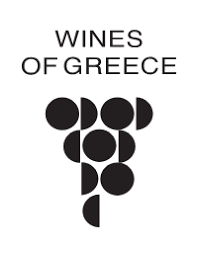Rare, Νative, PGI & varietal wines like no other
Behind Greece’s most celebrated wines lies a world whose story hasn’t been fully told. Alongside the classic gems such as Assyrtiko, Moschofilero, Xinomavro and Agiorgitiko, it is likely that more than 300 native grapes remain scattered across the country. In the Greek vineyard — diverse, fragmented, and alive — rare and unknown varieties continue to grow, having never claimed a place in large-scale production. Closely tied to their place of origin, they’re usually cultivated in old, small plots: vineyards on slopes, farmed in stoned terraces, with low yields but deep connection to the viticultural past of Greece.
Some of these varieties were abandoned for decades. Others never reached the market at all. Today, thanks to the persistence of a new generation of wine producers and the opportunities offered by PGI designations and the category of varietal wines, grapes once thought obsolete are finding their way back into the glass.
Thrapsathiri, a white grape from Crete once planted sporadically, is now emerging as one of the island’s most promising white varieties under the PGI Crete (ΠΓΕ Κρήτη) designation — with balance, freshness, and impressive flavor depth. In the Peloponnese, Kydonitsa, initially revived through PGI Laconia (ΠΓΕ Λακωνία), has evolved into one of the most dynamic white varieties in the Greek vineyard with wonderful aromas and balanced acidity. In Thessaly, Limniona — among the most up-and-coming Greek red varieties today — was brought back to life just two decades ago and thrives in the vineyards of PGI Tyrnavos (ΠΓΕ Τύρναβος), offering expressive, elegant wines with good ageing potential.
And if today some of the above varieties are gradually beginning to gain a relative recognition among the wine circles, even rarer varieties are resurfacing under PGI labels or as varietal wines. The red Vradiano and Mouchtaro are reclaiming space in the glass through designations like PGI Evia (ΠΓΕ Εύβοια) and PGI Sterea Ellada (ΠΓΕ Στερεά Ελλάδα). Potamisi, deeply rooted in the Aegean landscape, is gaining recognition through PGI Cyclades (ΠΓΕ Κυκλάδες), with wines of delicate expression and islandic character. In the Ionian Sea, Vostilidi is producing distinctive tannic white wines with aromas reminiscent of honey in recent years, particularly under PGI Slopes of Ainos (ΠΓΕ Πλαγιές Αίνου). While in the Peloponnese, the pink-skinned Sideritis—a variety that has a dual purpose, both as edible and wine grape, brings excellent results in production zones such as the PGI Achaia (ΠΓΕ Αχαΐα) for the production of white and rosé wines, revealing an exceptional potential when vinified with care.
Beyond the revival of these grapes lies the revival of the vineyard itself. Old, own-rooted vines that resisted the trends of past decades; forgotten plots that survived precisely because they were “off the radar”. These are now drawing renewed attention to the global market.
In an era of rapidly changing conditions, the wealth of these native varieties gains new importance. Many are late-ripening, naturally maintaining lower alcohol levels, even in hot and dry vintages. Wine research is increasingly shifting from asking what yields well to what endures with quality.
Greek wine doesn’t need to look beyond its borders to reinvent itself. The answers often lie in an old vineyard, in a forgotten grape, in a PGI designation that still has stories to tell. The future of Greek wine may well be built on diversity.

